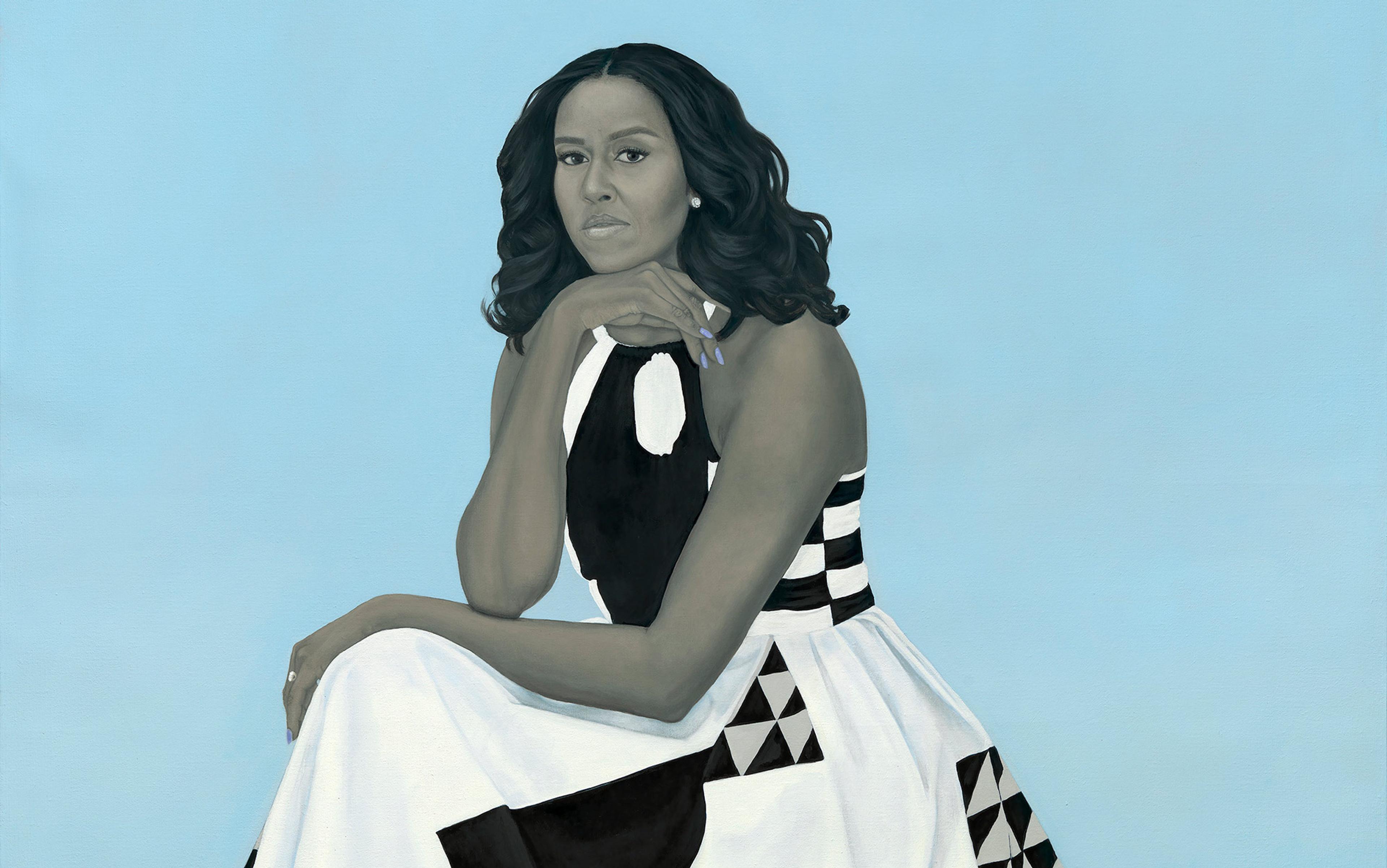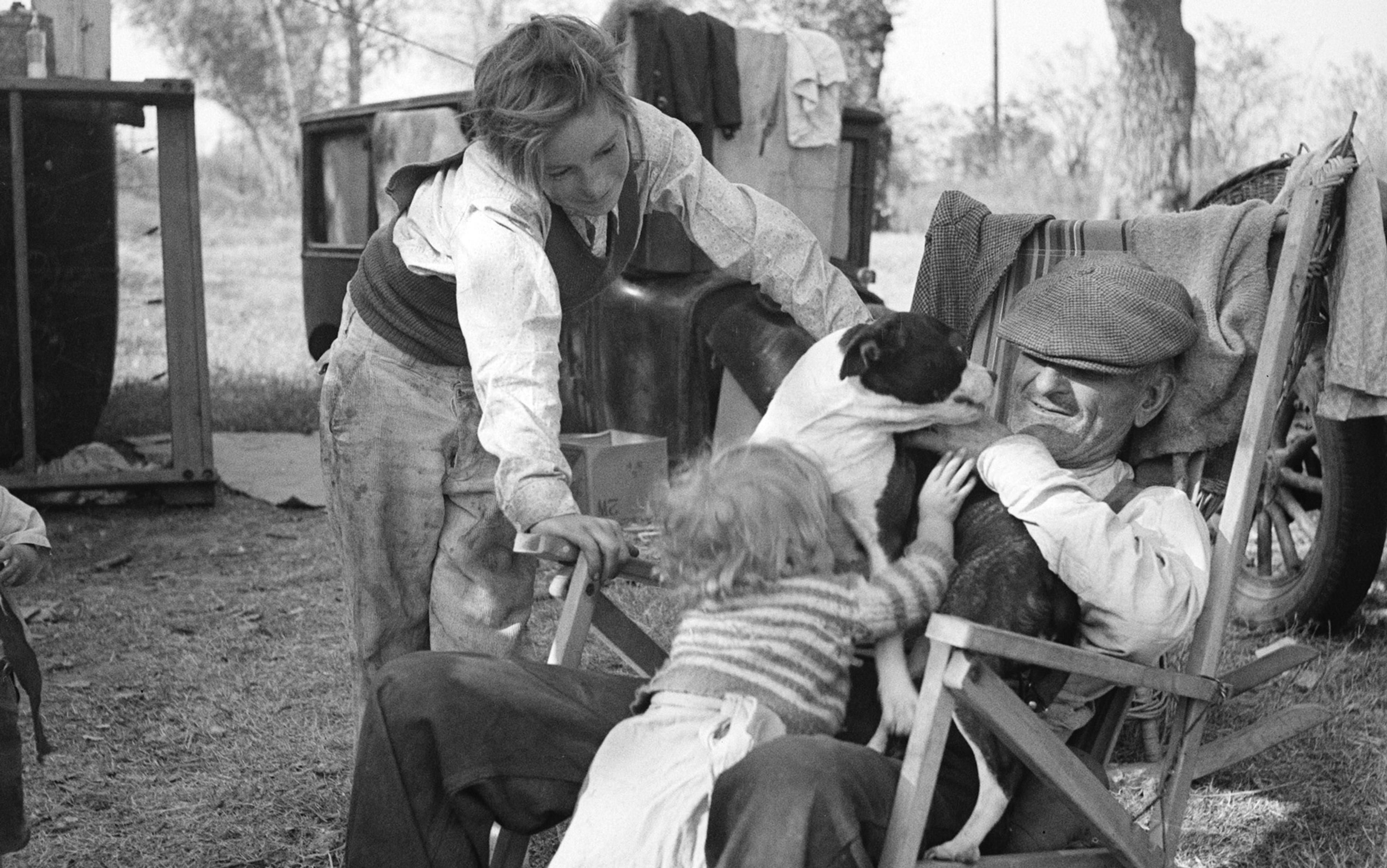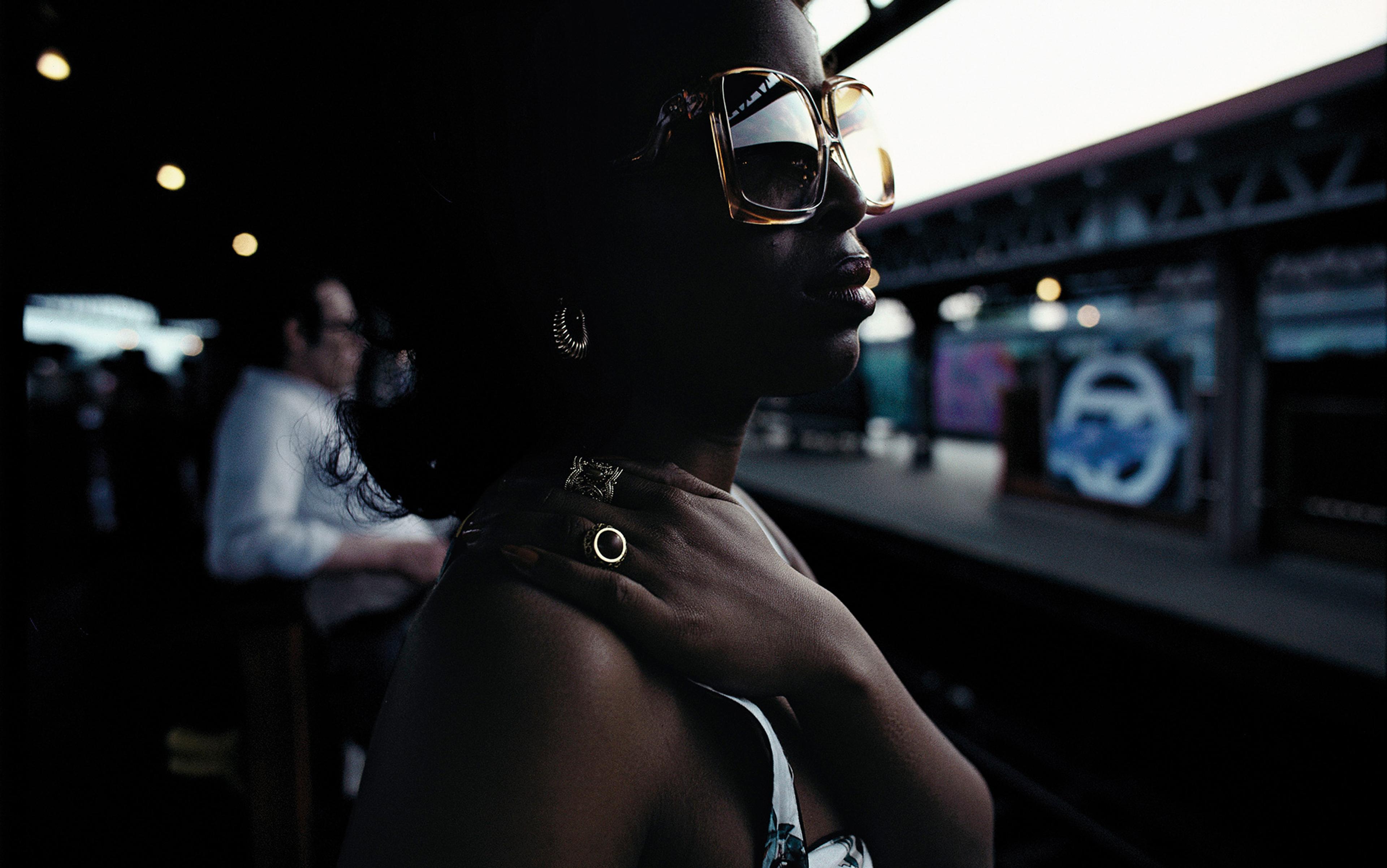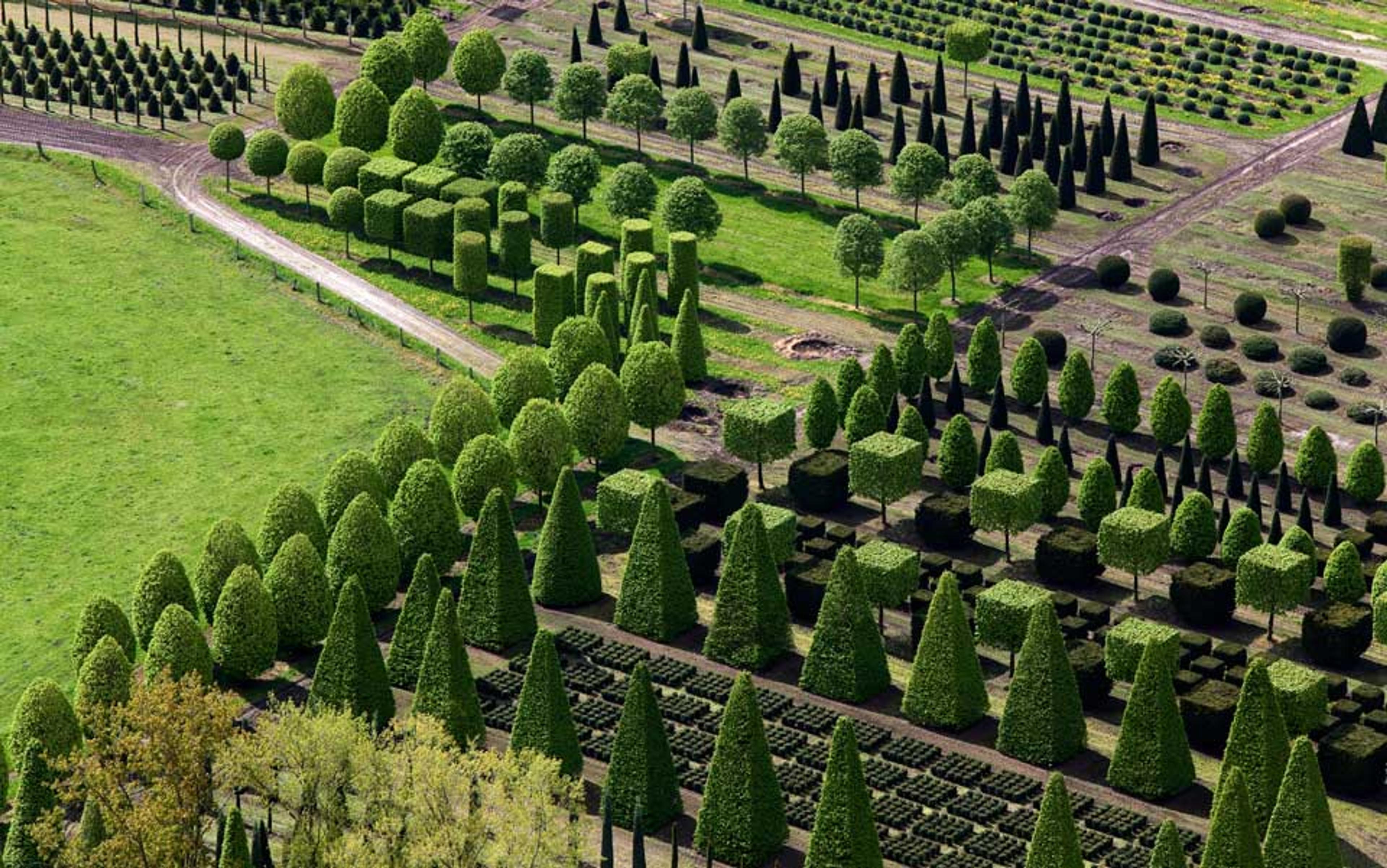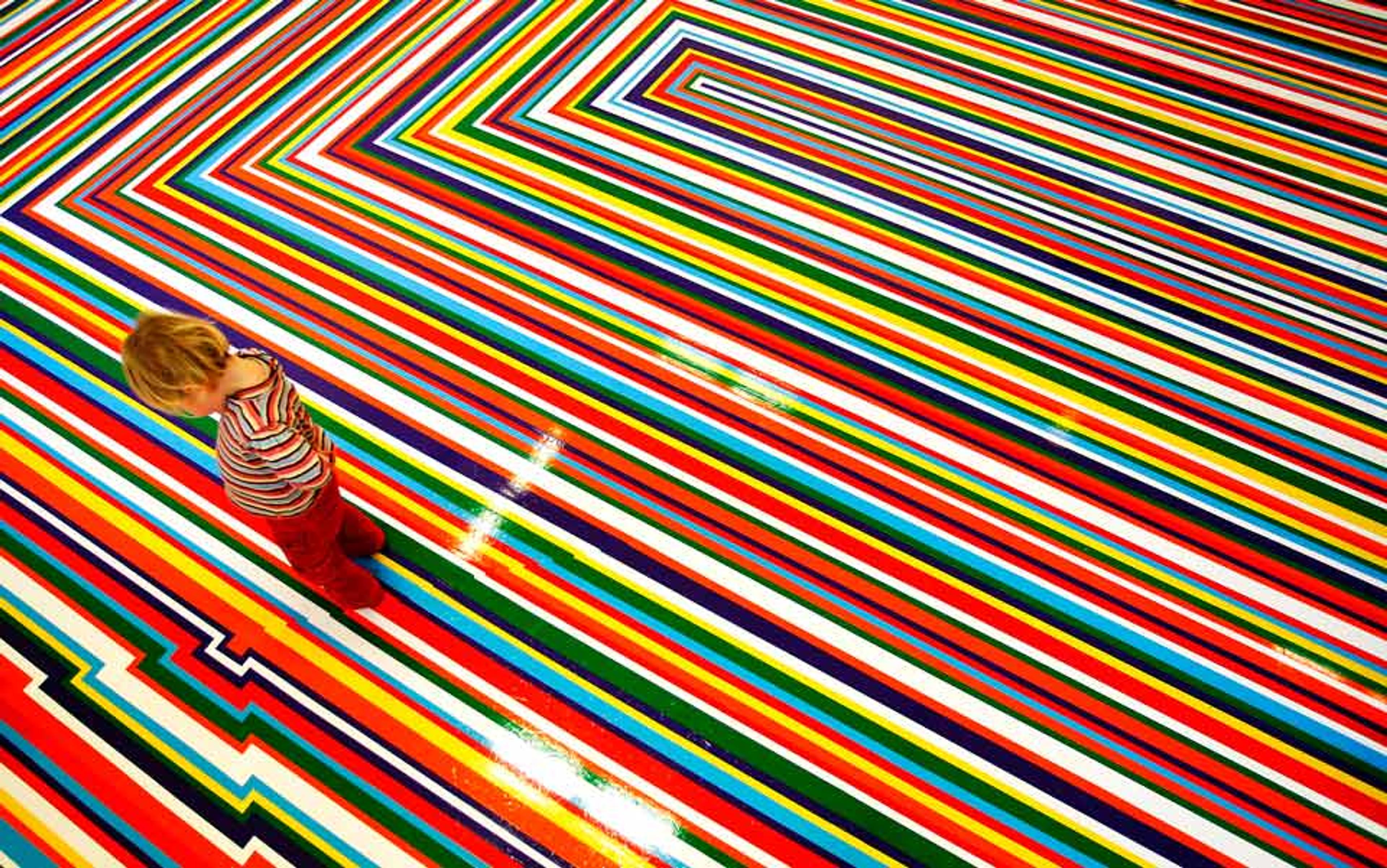This portrait is beautiful. Sometimes, I find its beauty in the perfectly angled crook of the arm that rests easily across the sitter’s lap. At other times, it is in the unstudied grace of the hand that props up the head, the long fingers curled in repose. Often, it’s the dress that I find beautiful: expansive, heavy and brilliantly white, its generous skirt magnificently amassed around the seated figure. Occasionally, even the backdrop, an impassive flat wash of a blank summer blue that engages my attention. There are many ways to describe Amy Sherald’s 2018 portrait of the former First Lady, Michelle Obama. It is regal, powerful, accomplished and imposing. But I absolutely know that it is also beautiful.
I hold this judgment as a deep and sure conviction. I don’t mean it as a casual pleasantry, a blandishment offered about the attractiveness of the sitter – although when we speak of beauty, we often mean only a narrowed notion of female physical appearance. I take beauty to refer instead to a peculiar and particular experience, both sensory and cerebral, often characterised by an inward responsiveness to an outward stimulation. It is an unmistakeable arrangement of attention and affect, a way of understanding and engaging with the world. In contemporary culture, we talk carelessly about beauty, dismissing it as a superficial concern or regarding it only as the special interest of art. But in philosophy, too, next to truth and morality, beauty can feel insubstantial, undeserving of our serious reflection.
This tells most of all in the inane and imperious axiom that says ‘Beauty is in the eye of the beholder.’ It’s a well-meaning attempt at democratisation, allowing us all the power to declare beauty even where others might dissent. But this unthinking homily never interrogates the mysterious criteria by which we deem artworks, objects, even ideas, beautiful.
Then there’s the problem of indeterminacy. Sometimes, the word ‘beauty’ aspires to the solidity of a proper noun, grand and true. Other times, it seems a more nebulous term for an elusive kind of experience. We can be careless about the beautiful, shrugging it off as a matter of mere appearance. It is not grave like the stuff of our political lives, or profound like our moral considerations. Certainly, we know to admire the beautiful in its different forms – a painting, a song, a building, sometimes even an act or a gesture – and we might go so far as to believe that our engagement with beautiful things constitutes a deep and meaningful experience, as though it were a momentary pause in the hectic thoroughfare of our lives. But we rarely permit matters of beauty the same seriousness that we customarily grant big ideas such as ‘democracy’ and ‘justice’.
Yet the beautiful was once a profound philosophical category, soberly debated by the Greeks and carefully delineated by 18th-century minds, routinely regarded as a strict and rational phenomena, and the subject of the most serious meditations. A considerable portion of that debate has been dedicated to the question of whether the beautiful exists there, in the properties of that objective thing, or here, in us, as a subjective judgment. In Timaeus, Plato recognised beauty as the harmony and proportion of parts, made manifest in the ‘forms’ of the world. Following suit, Aristotle claimed that ‘the chief forms of beauty are order and symmetry and definiteness’. However, in the Symposium, Plato also acknowledged beauty as a splendour only dimly apprehended. Beauty is not, he explains, found in ‘a creature or the earth or the heavens’, but only ‘in itself and by itself’.
The circularity of that last formulation feels at once infuriatingly opaque and true. The beautiful demands that we call it beautiful – we can recognise beauty anywhere and name it instantly – and yet there is something unsatisfactory in the idea that beauty could be narrowed to a singular set of characteristics or the isolated qualities of a given object.
The early philosophical tradition that sought to understand beauty was characterised by the impulse to capture and quantify its features. This is the Euclidean position that identifies beauty with a particular idea of ratio and the symmetrical relation of parts to a whole. (Euclid uses the specific example of the line, which, divided into two unequal parts, results in the whole that is to the long part as the long is to the short.) Following Euclid, the beautiful is repeatedly formulated in the elegant terms of his golden ratio, crystallised in the magic number 1.618 and plotted in the Fibonacci sequence. Here, the beautiful is a numerical pattern, expressed in the arrangement of leaves on the stem of a plant, the measures of a building, or the relative length of limbs in well-proportioned people. It’s an idea of beauty that unfolds in the various forms of an orderly world: the realisation of an inexorable mathematical law.
It’s easy to understand the allure of this account of beauty. If the beautiful could be precisely prescribed, it might be endlessly reproduced; and if it were captured in a numerical formula, then we might use it as a key, unlocking the secrets of the beautiful world. This shared key lends our world of beautiful things a coherence, a sense of accordance and harmony – which might extend to include us also. The Roman philosopher Boethius, writing of the beauty of music in his sixth-century treatise De Musica, observes that when harmonious compositions of sound please us ‘we come to recognise that we ourselves are united according to this same principle of similarity’. Much later, the Swiss-French architect Le Corbusier, returning to the golden ratio for the purposes of describing the beautiful modernist building, describes ‘rhythms [that] are at the very root of human activity’, and resound ‘in man through an organic inevitability’.
In the Islamic tradition, this rhythm takes the form of complex geometric design that, with its infinite possibilities of repetition, is taken as the representation of God’s limitlessness, too. You can see it in the beautiful, decorative arts of mosques, in religious texts and Islamic interior design. Each single element models in miniature the pattern of a larger perfection, in the way that human beings are deemed to be modelled in their maker’s image. It’s a familiar gesture in the Christian tradition too, where beautiful things are understood as the creations of a beautiful God. But the religious explanation of the origin of beauty doesn’t in itself account for apprehension. Beauty, whether you believe it to be God-given or godless, elicits our judgment, the precise alignment of our senses and our sensitivity – a skill and attunement of attention that is our own.
The 18th century, with its post-Enlightenment confidence in human capability, emergent sense of inalienable rights and burgeoning cultures of feeling, marks a decisive turn in thinking about beauty, moving from the mathematical and the divine to the subjective. The philosopher and statesman Edmund Burke read beauty as a series of qualities made meaningful only insofar as they act on the human mind through the senses. In his book A Philosophical Enquiry into the Origin of Our Ideas of the Sublime and Beautiful (1757), Burke repudiates the notion that beauty could consist only in qualities such as proportion or harmony. His didacticism over what constitutes beauty is a mark of his enormous confidence in his own ability to judge: smallness, smoothness, delicacy, gradual variety, fair colour, grace and elegance, he insists, are ‘the real cause of beauty’ and that in which ‘it really consists’.
Something unites us in our judgments of beauty. It is an experience at once particular and shared
David Hume, writing at the same time in his Essays, Moral, Political and Literary (1758), clarifies that ‘Beauty is no quality in things themselves: it exists merely in the mind which contemplates them; and each mind perceives a different beauty.’ What matters is an exercise of individual will. ‘Every individual ought to acquiesce in his own sentiment, without pretending to regulate those of others,’ he explains. The merit of Hume’s account of the beautiful is its gentleness, its resistance to tyrannical notions of taste, and its willingness to permit variance and volition. In some ways, his vision of the beautiful is a model of democracy; inclusive, cooperative and tolerant, existing not as some divine or mathematical directive but by dint of the consenting minds that think it. It tells us about more than our mere preferences. It tells us about the way that we might allow for the taste of others alongside our own.
This is the paradox of the beautiful. It is not easily interchangeable with anything else (it is not handsome, not good, not smart, not fine), and this particularity suggests the possibility of consensus, an agreed collective recognition of beauty even when our judgment is our own. Crucially, something unites us in our judgments of beauty. It is an experience at once particular and shared.
This is what Immanuel Kant brilliantly investigates in his ‘Critique of Judgment’ (1790). When we declare that an object is beautiful, ‘we believe we have a universal voice, and lay claim to the agreement of everyone’ in a judgment of ‘subjective universality’. This universality pleasingly grants us all a stake in the beautiful. It is an inclusive gesture that allows Kant to zip around the tired question of whether beauty resides in an object or an experience that happens to us. The beautiful is, he insists, both a judgment ‘whose determining basis cannot be other than subjective’ and that nonetheless makes a claim to ‘universal validity’. By this, Kant means that we take our own experience of the beautiful as one that others might also share. In doing so, we posit an idea of the sensus communis, or a communal sense, imagining our judgment next to that of others. The beautiful thus invokes an imagined community.
Kant’s account of the beautiful affirms its deep philosophical stakes, not only as a mode of imagining others but also for engaging with ourselves. In Kant’s terms, aesthetic judgments expose the mechanics of our faculties, the interplay between our sensory apprehension (or ‘intuitions’) and reaching for understanding (or ‘concepts’). The beautiful stimulates the free play of the faculties, without any urgency to seize on a determining idea. When we reflect on the beautiful, we are engaged in the pleasurable and creative exercise of forming a judgment. And in judging beauty we learn something, too, about other kinds of important judgments (namely, of reason and of morality) and the different logics by which they work. In the Kantian account of the beautiful, our aesthetic experiences alert us to the intimate workings of our own understanding. And this, too, is beautiful, in its own way.
Kant’s ‘subjective universal’ turn in philosophy kickstarts the wider culture from which the Romantic understanding of beauty emerges. The poet John Keats records it most acutely in his ‘Ode on the Grecian Urn’ (1820), where he imagines gazing at this ‘foster-child of silence and slow time’, with its ‘leaf-fring’d legends’, its ‘men or gods’ in ‘mad pursuit’ and its lovers on the brink of a kiss. The urn elicits from him the deepest reflections. Inspecting it from every angle, he is full of questions. What it invokes most of all is Keats’s imaginative range and his limitless curiosity, prompting the deepest thoughts about his own mortality. The urn invites his judgment, not only as to its own beauty, but his capacity to reflect on it. The poem’s famous closing pronunciation that ‘Beauty is truth, truth beauty’ carries the ring of finality but provides no real closure. An elliptical and mysterious utterance, it hints that the urn is the beautiful object that alerts us, ultimately, to our capacity for self-inspection.
Twentieth-century thinkers understandably wrestled with beauty; suspicious of its distractions, they were unsure how to reconcile it to an age of wars, wastelands and genocide. The American philosopher Arthur Danto in 1992 described the abandonment of beauty in an ‘age of indignation’ and a modernity characterised by a suspicion of that which could pacify or conceal political realities. In modern art, beauty became the object of sabotage, notably by Dadaists and Surrealists who sought to upend its conventions and mock its privileges by planting urinals in art shows and tearing up traditional poetic forms. The lesson here, perhaps, is that beauty, ever fragile, is always susceptible to our challenges. And it can always be reconstituted anew.
In our internet-enabled age of narcissism, where the term ‘beauty’ has been seized by the advertising and cosmetics industries, we might do well to remember the range of the beautiful. In Xenophon’s Memorabilia of 371 BCE, when Socrates is asked if he knows of beauty, he replies confidently: ‘Yes, many things’, because beauty itself is various, found not just in statues or songs. Wrestlers and runners, he explains, can be beautiful, too. This makes sense if you’ve ever watched the arc of a tennis racket as a champion goes to serve, or caught the even, loping stride of a middle-distance runner, a Vitruvian man in motion, everlastingly striving. There can be beautiful gestures, too: the mass gathering of innocents resisting a state that injures or ignores them, or the individual acts of care by which we demonstrate our alertness to a shared future.
In its long philosophical history, beauty has taken detours. It has been derailed by technical wrangles and commandeered by authoritative proclamations of good taste. But perhaps now, we are only just starting to understand the exceptional nature of the experience it demarcates, how it works upon the body, alerts us to our susceptibility to the world and reminds us of our commitment to it. When the literary critic Elaine Scarry investigated beauty in the late 1990s, she noticed the ‘contract’ between the beautiful object and those who recognise it as such. Each, she notes, confers ‘the gift of life’, welcoming the other. It’s a cloying, rather vague expression, but there is something to this idea of a compact, the notion of a mutual realisation that unfolds between us and the object of our attention when we are engaged in judgments of beauty. Something rises to challenge our particular perceptual faculties, and we rise to meet it in turn.
It’s a prickling around my shoulders, a tightening in my chest – a feeling of pain as well as pleasure
Beautiful things, Scarry observes, have the effect of ‘radically decentring’ us. Who doesn’t know that jolting experience of adjacency, when a song sways us or a gesture penetrates, when we are beside ourselves, as it were, somehow outside of our ordinary sensations and thoughts? Isn’t this the beautiful? More recently, in Only a Promise of Happiness (2007), the philosopher Alexander Nehamas characterised beauty as a kind of beckoning, an invitation to further exploration and interpretation. The beautiful is not some instantaneously apprehensible surface. The hard-won aesthetic judgment it elicits creates a temporary kind of community, providing a space under which our collective thoughts gather. ‘What is involved,’ he explains, ‘is less a matter of understanding and more a matter of hope, of establishing a community that centres around it – a community, to be sure, whose boundaries are constantly shifting and whose edges are never stable.’
This kind of community is made possible by our shared capacity for somatic-sensory response, a body plugged into a mind, awake to the world and responsive to its suggestions. For me, the beautiful is a kind of prickling around my shoulders, a tightening in my chest, sometimes a welling in my eyes, a feeling of pain as well as pleasure. Sometimes, it is the sense of something precarious, a particular organisation of colour or sound that can be gathered together permanently but nonetheless bears a certain frailty as though both it and the coherence of my attention might fall apart at any moment. At other times, the beautiful can feel expansive, like air inhaled, filling my lungs endlessly. The beautiful demands repetition – reviewing, rewinding, revisiting – as though whatever it might intend to say could never be said enough or too much.
The experience of the beautiful is predicated on the acceptance of a certain kind of susceptibility to the world, a sensitivity that we cannot always dull, and a relationship to others that we cannot break. Sometimes you can see it, as clear as day. Earlier this year, two-year-old Parker Curry was photographed gazing up open-mouthed at Sherald’s portrait of Michelle Obama, just after it was unveiled at the National Portrait Gallery in Washington. The beautiful is a puzzle for all of us.
